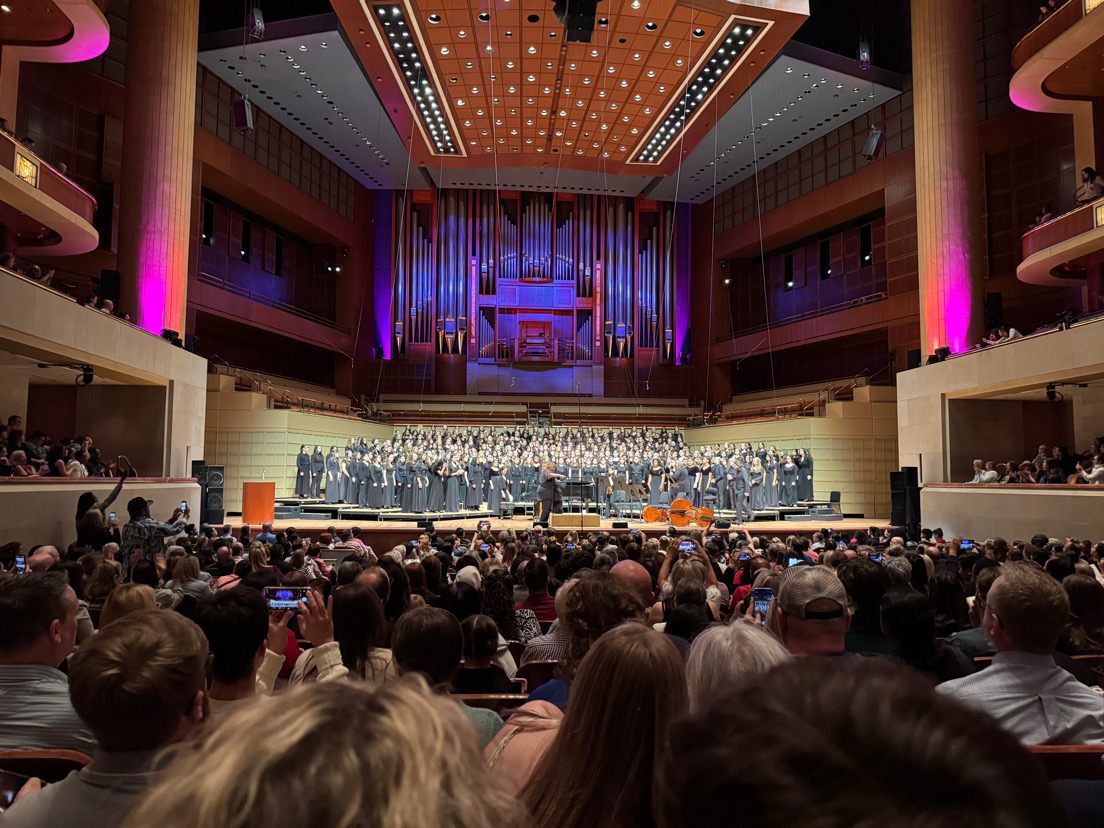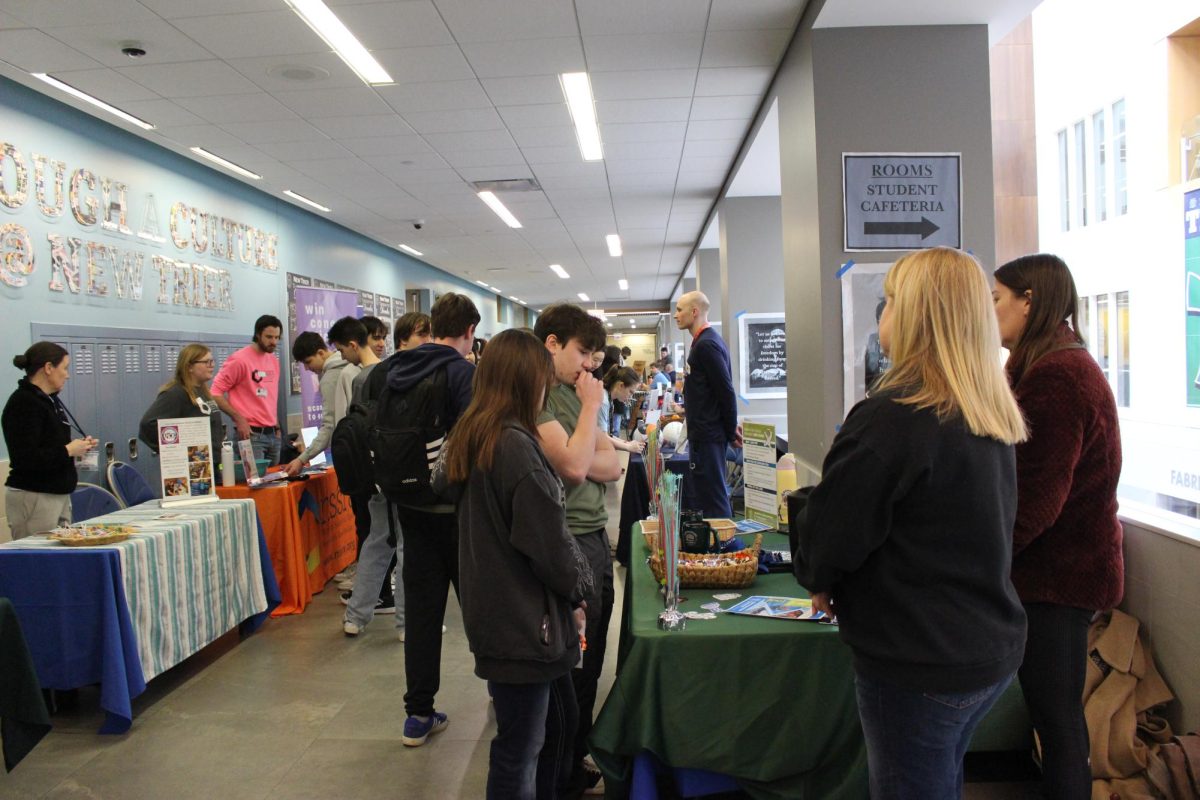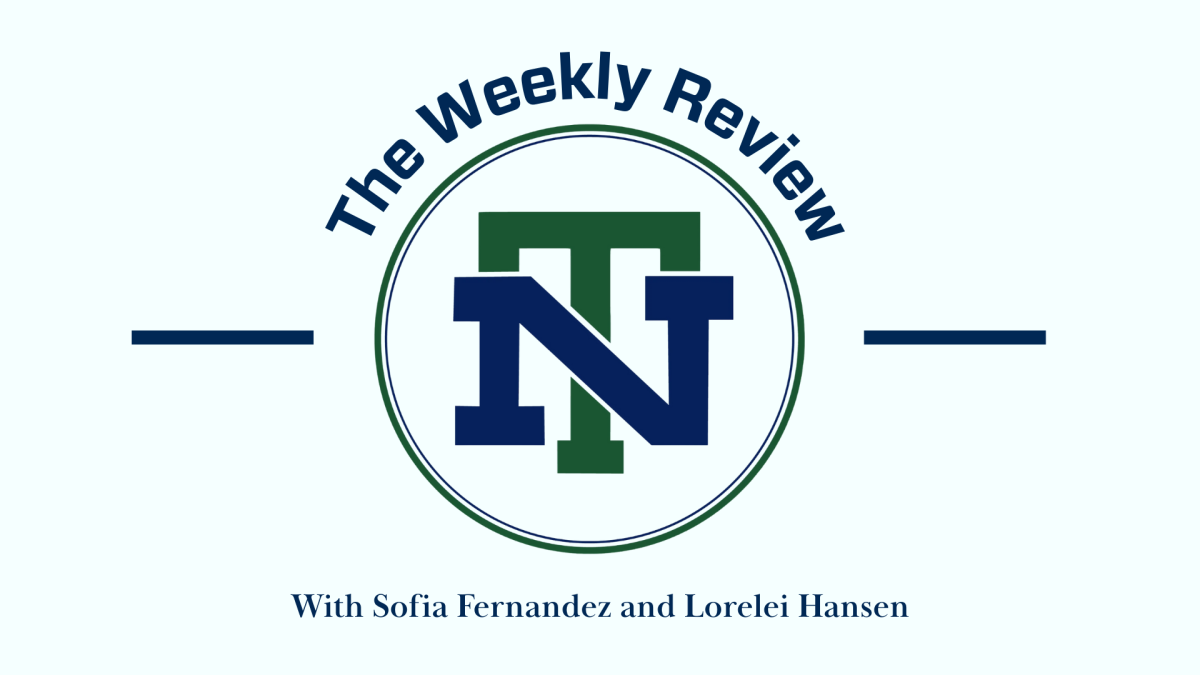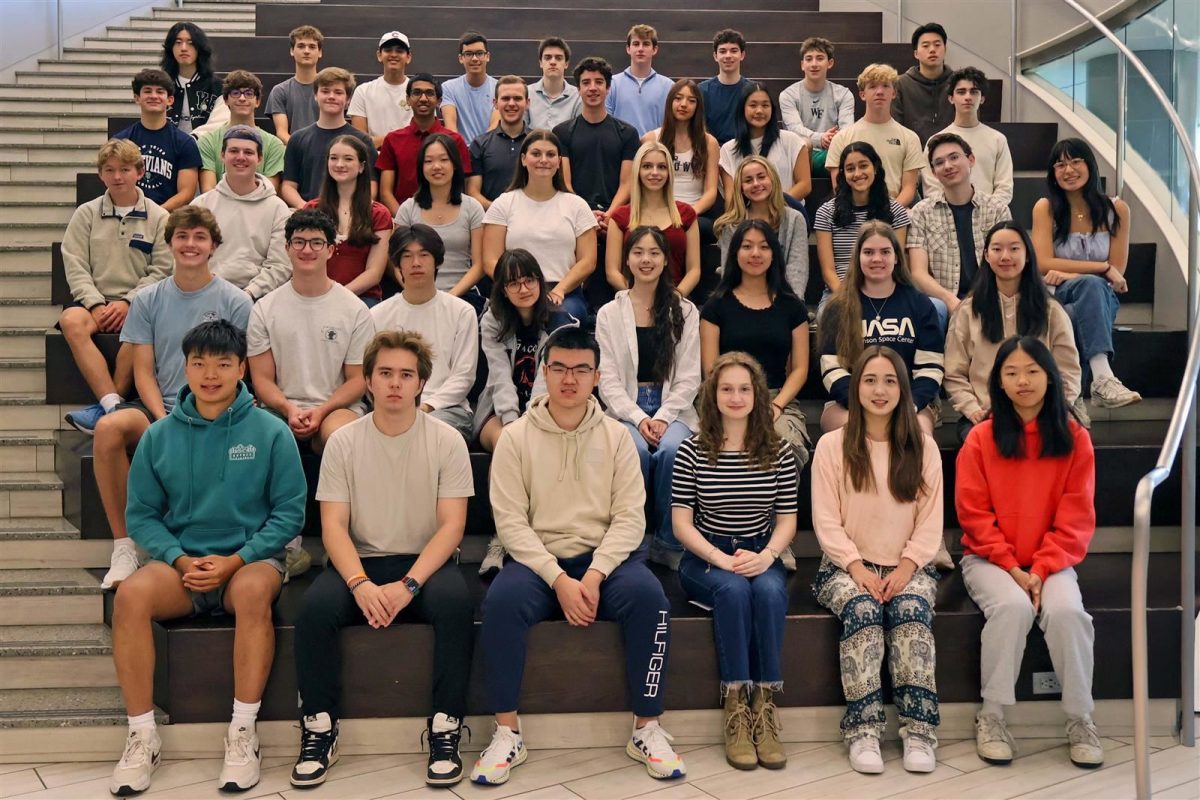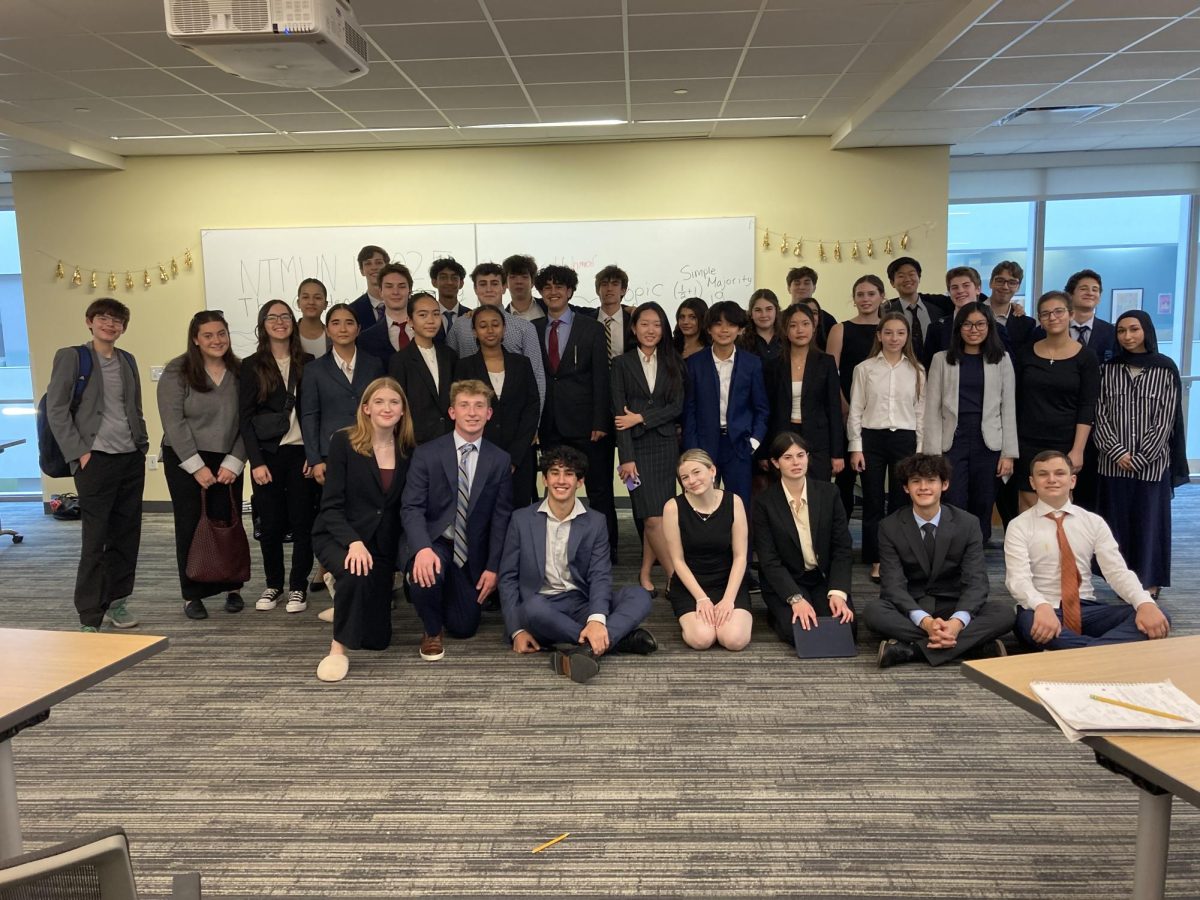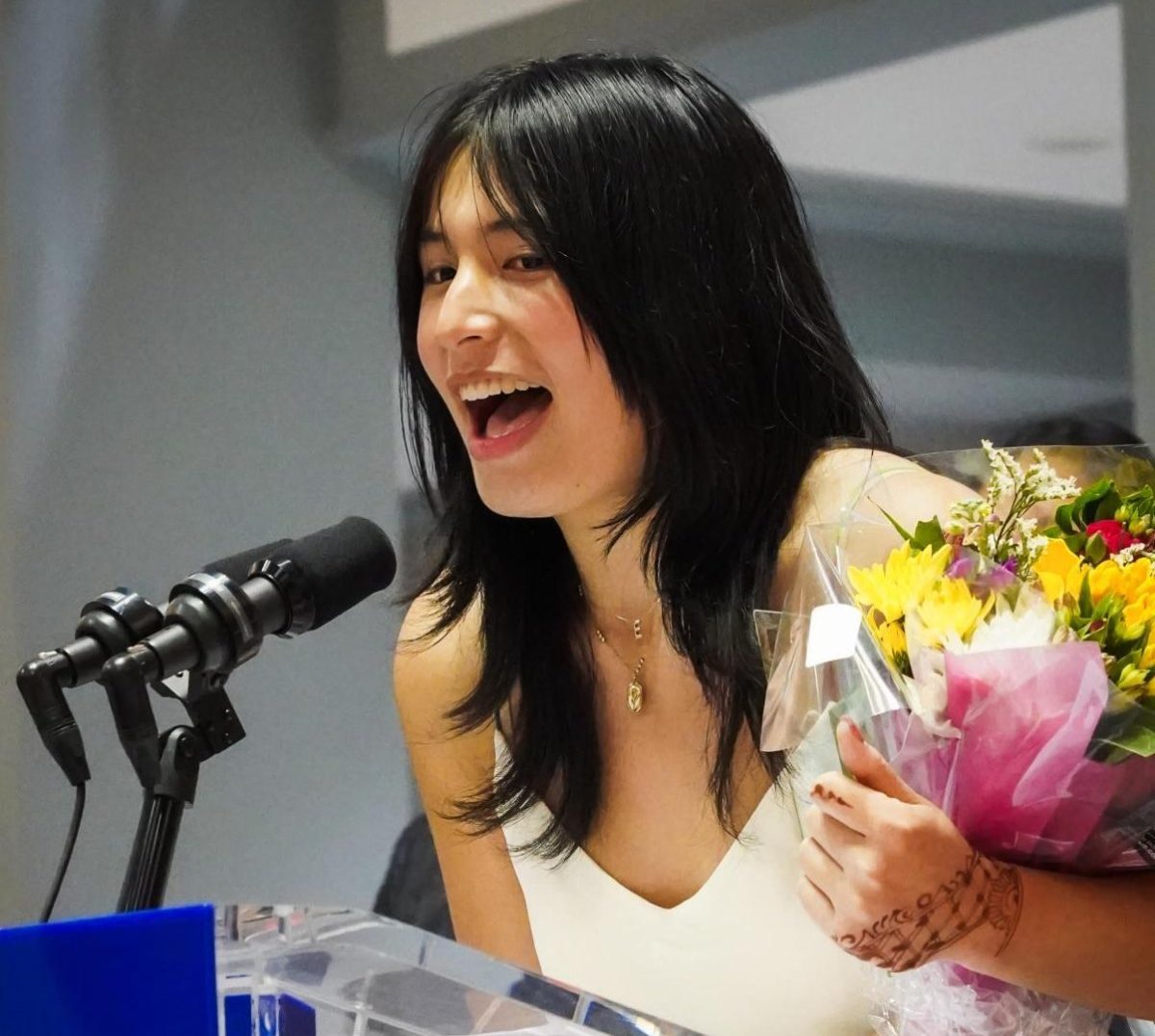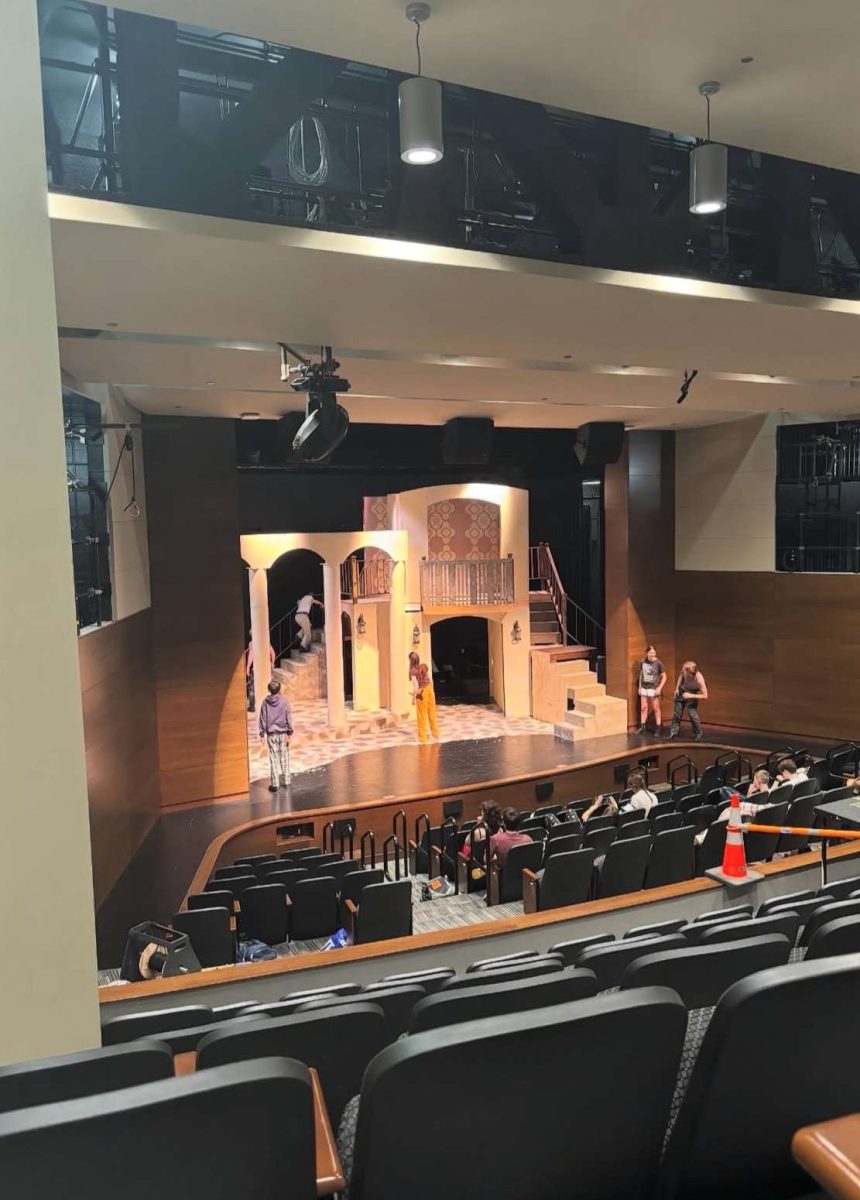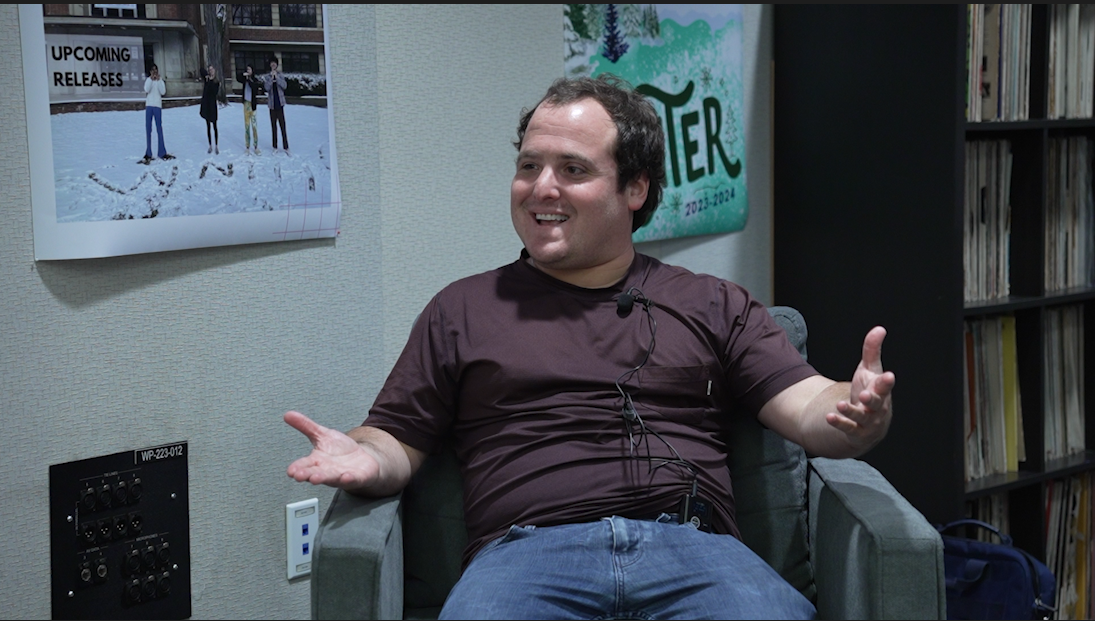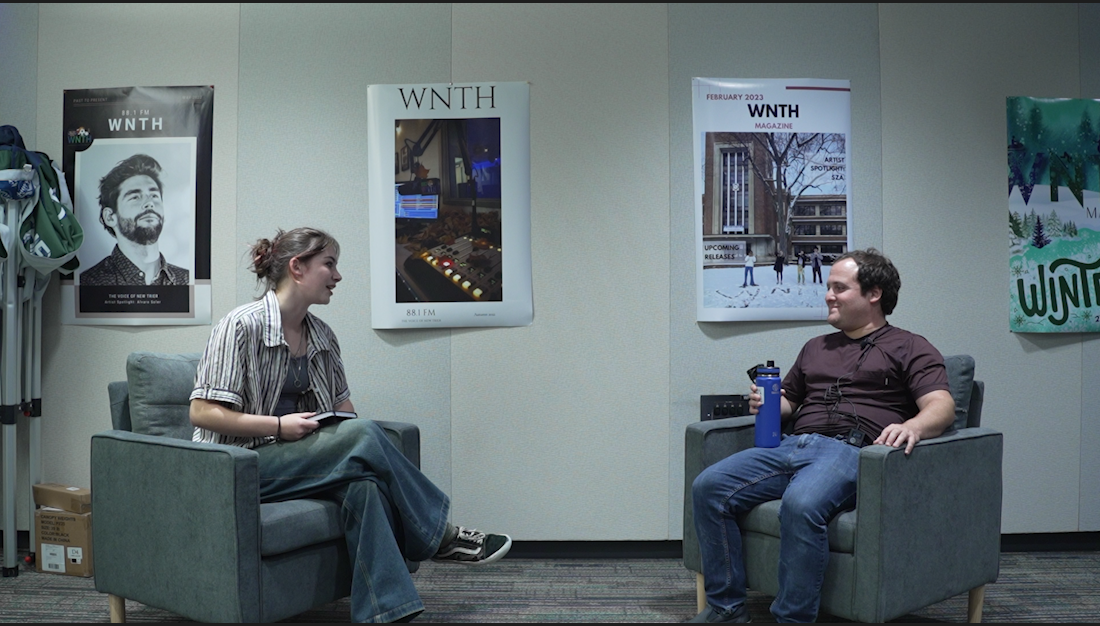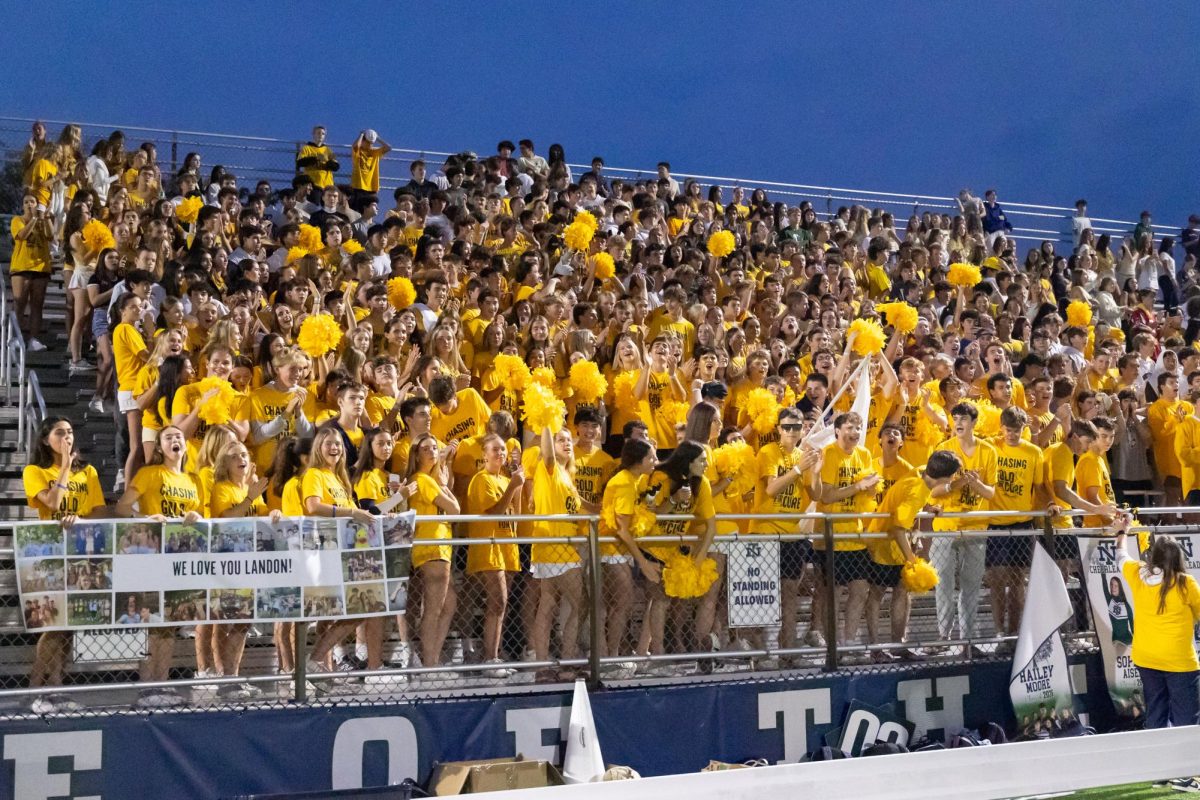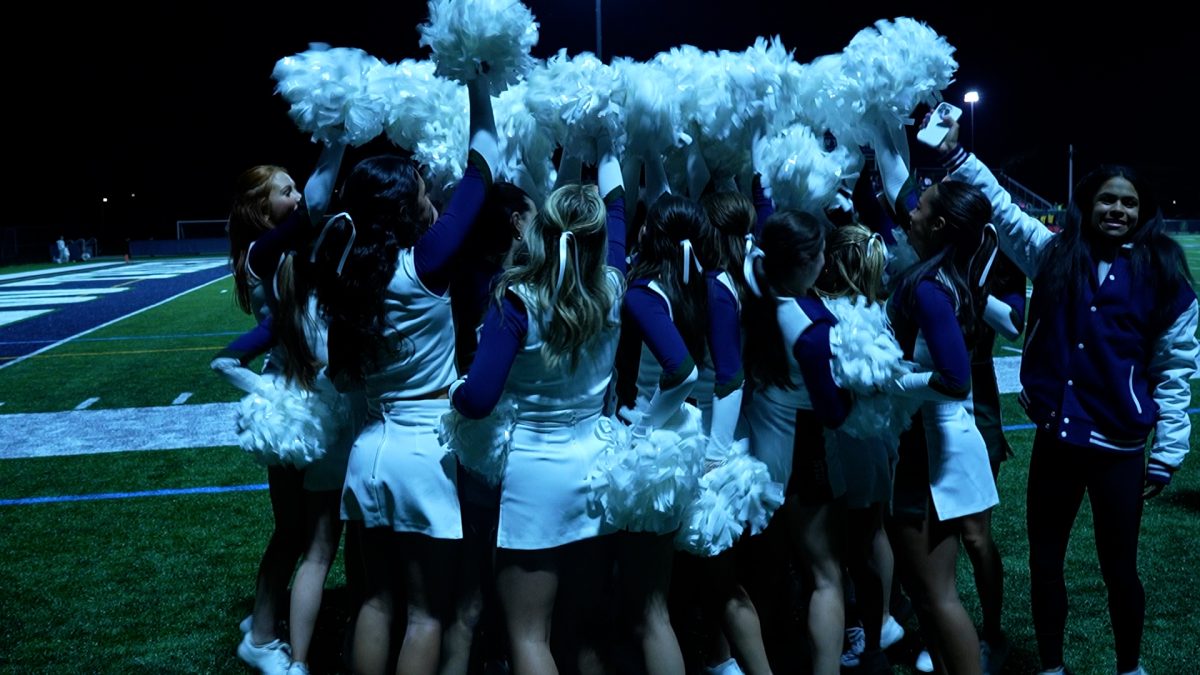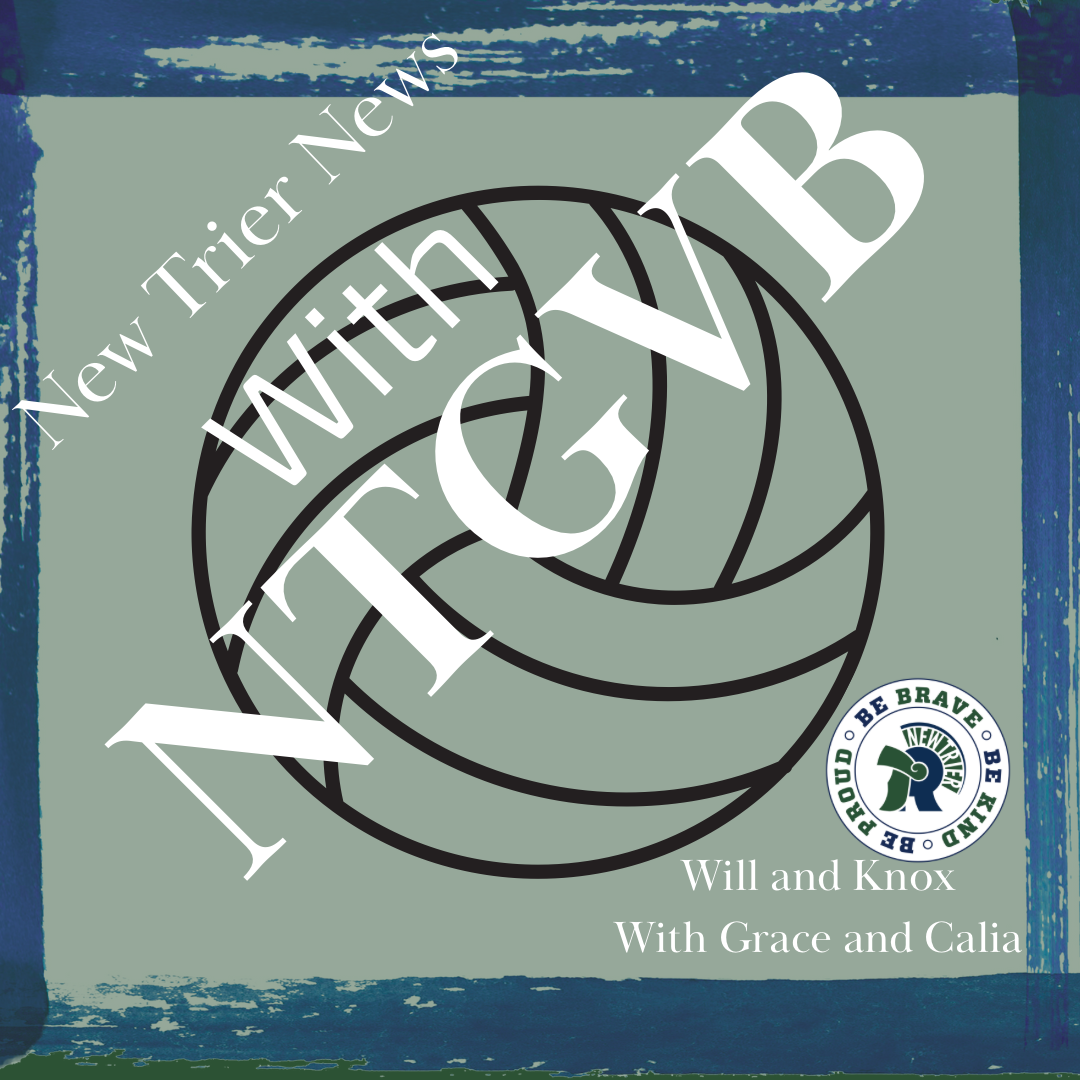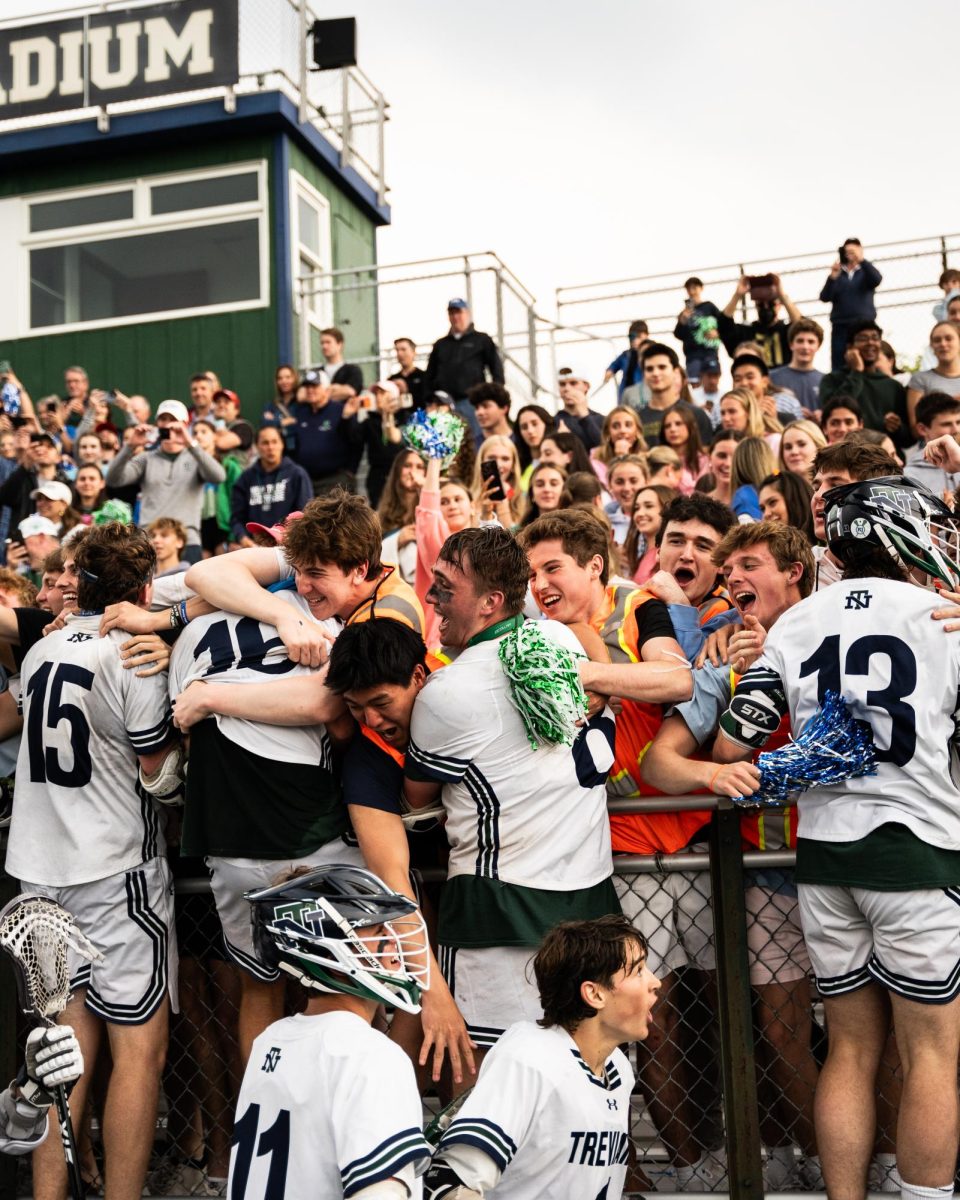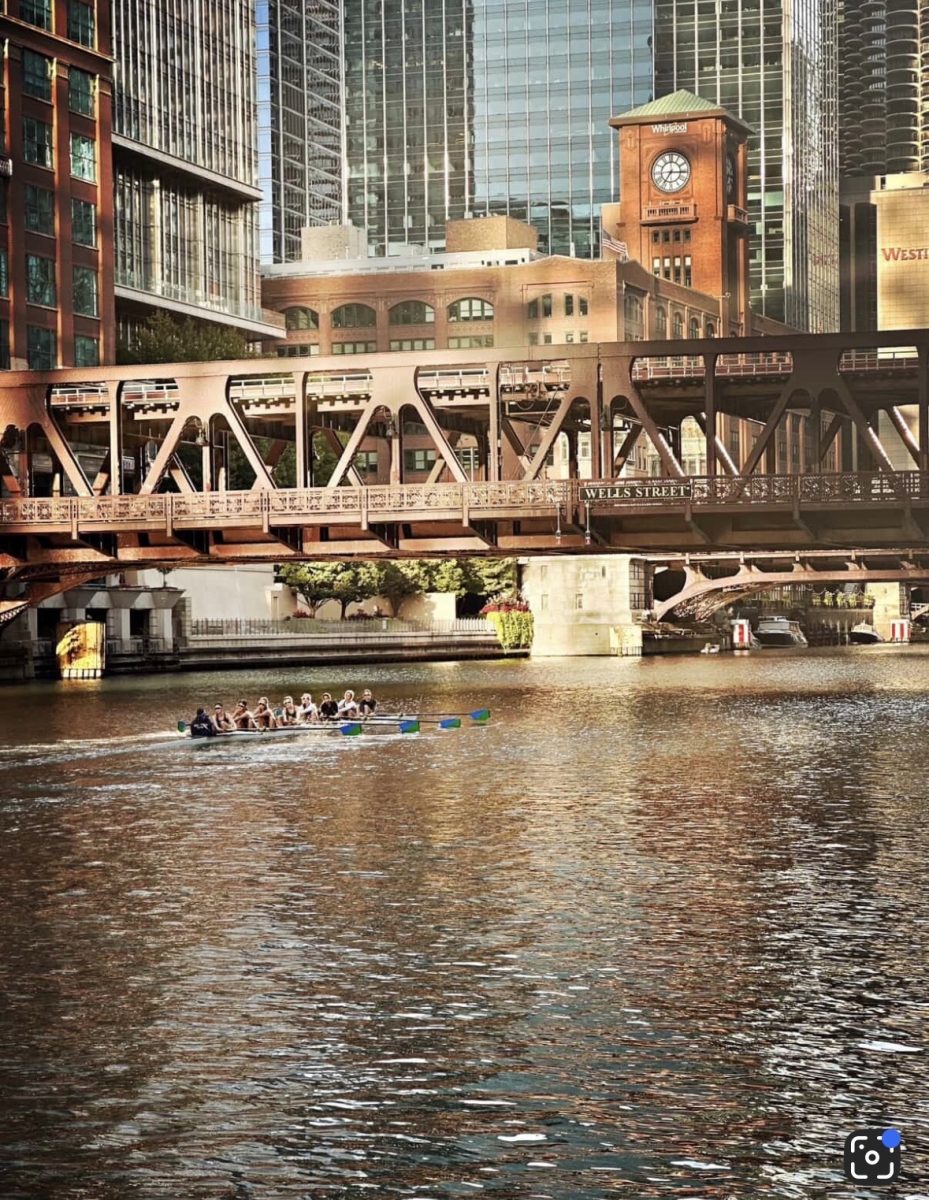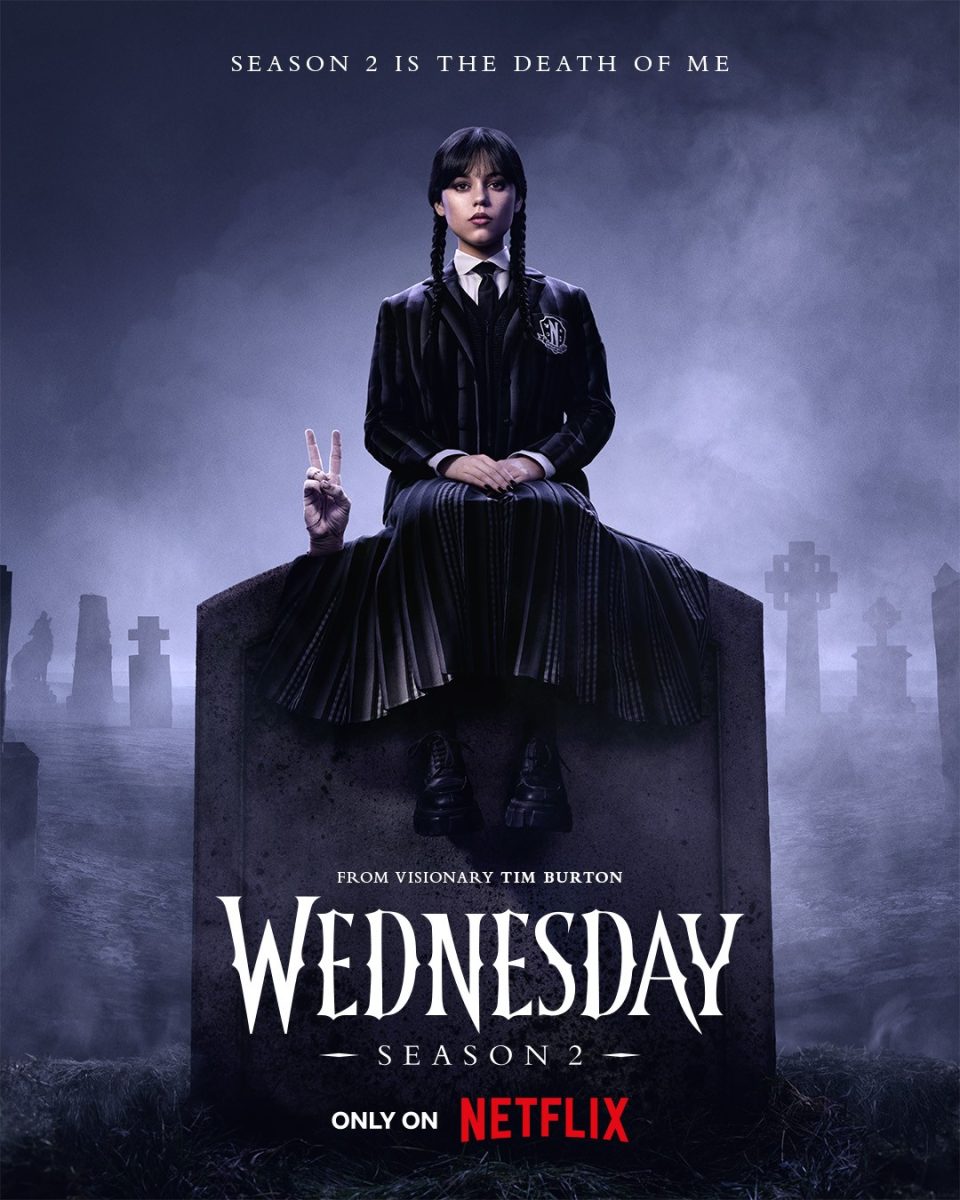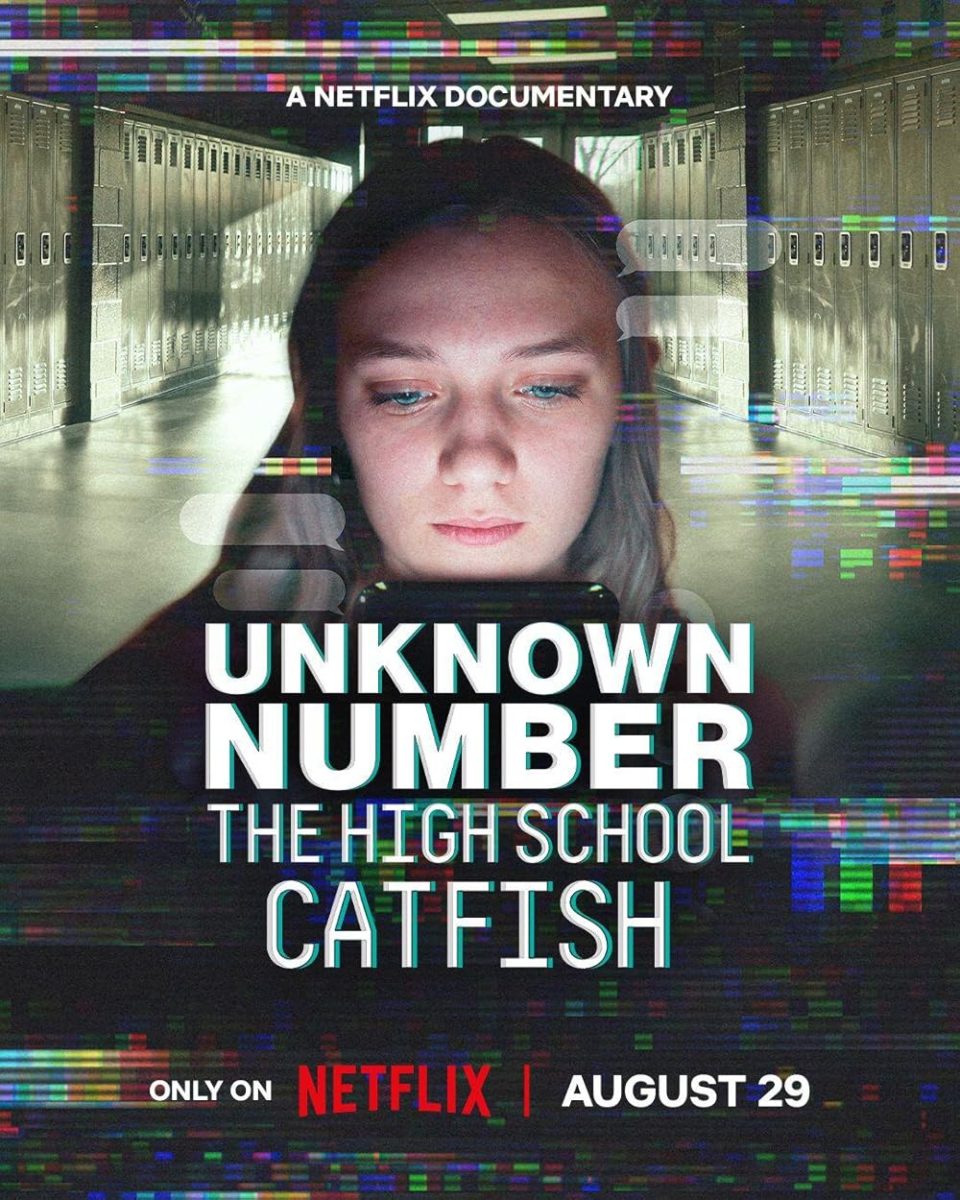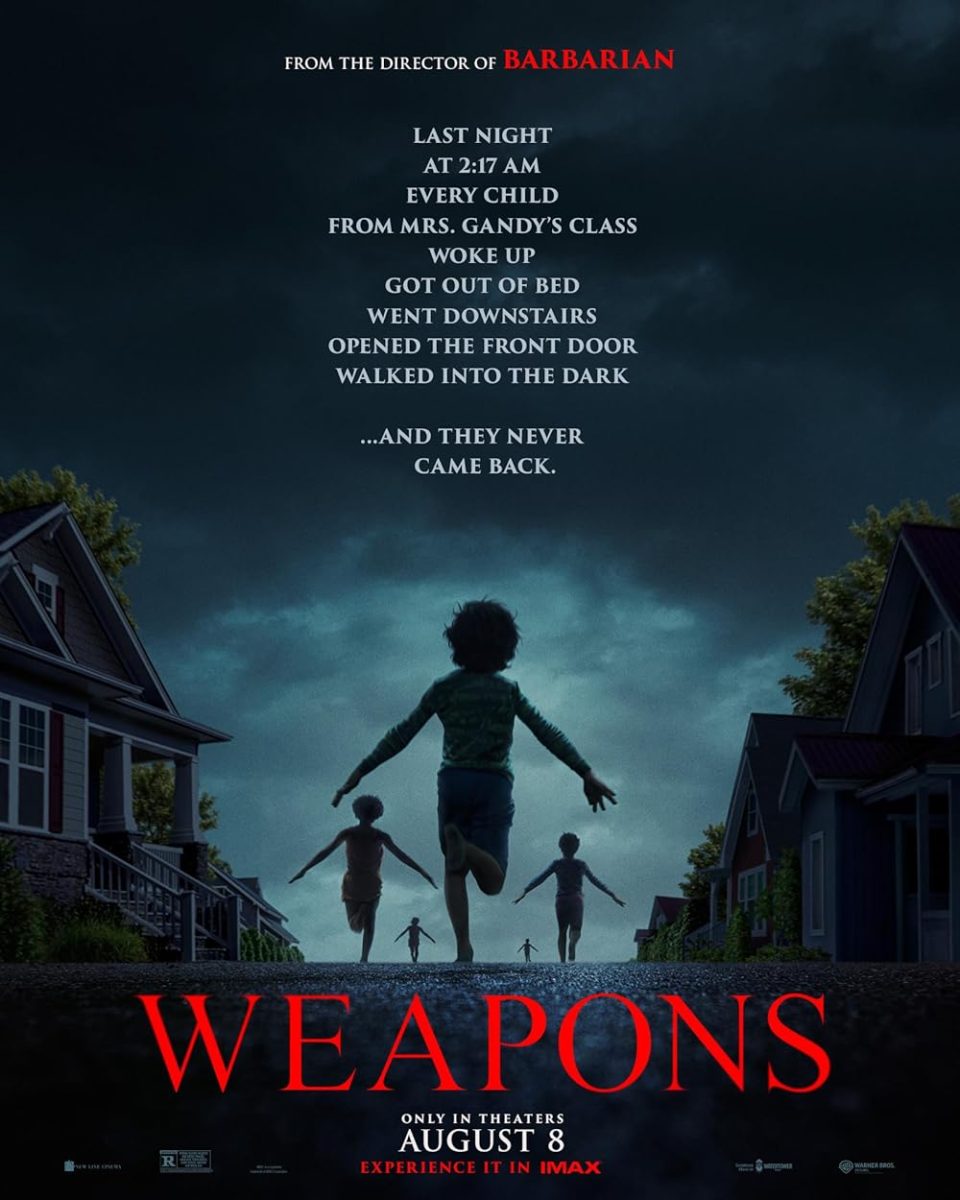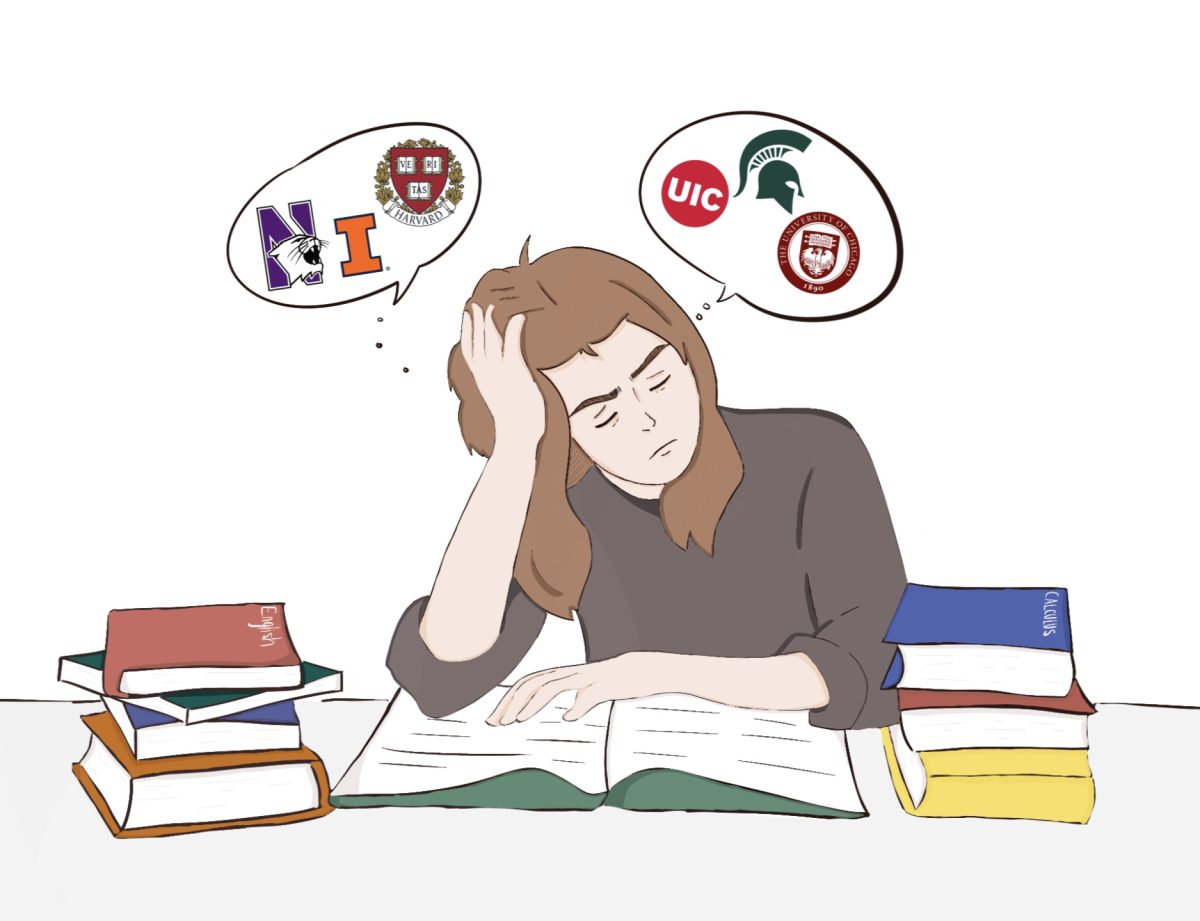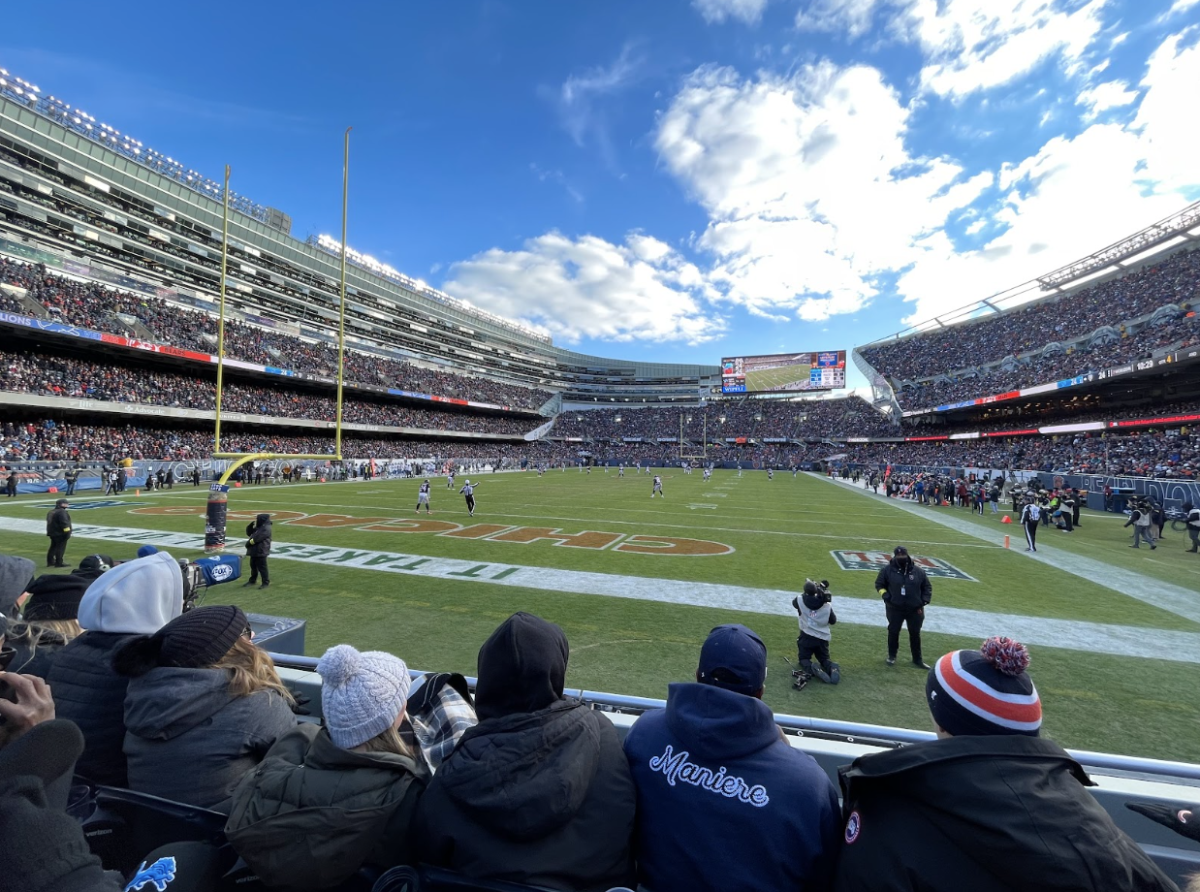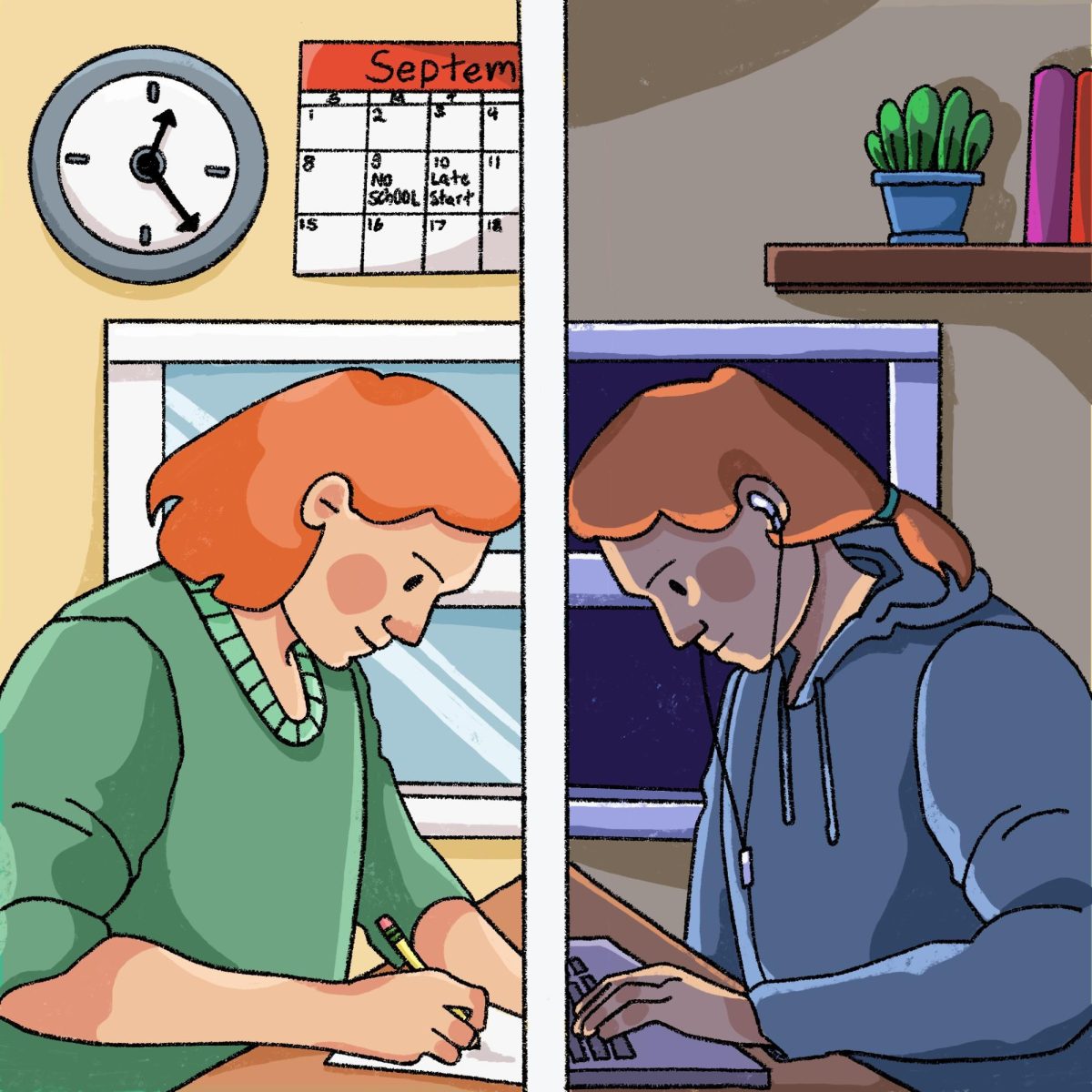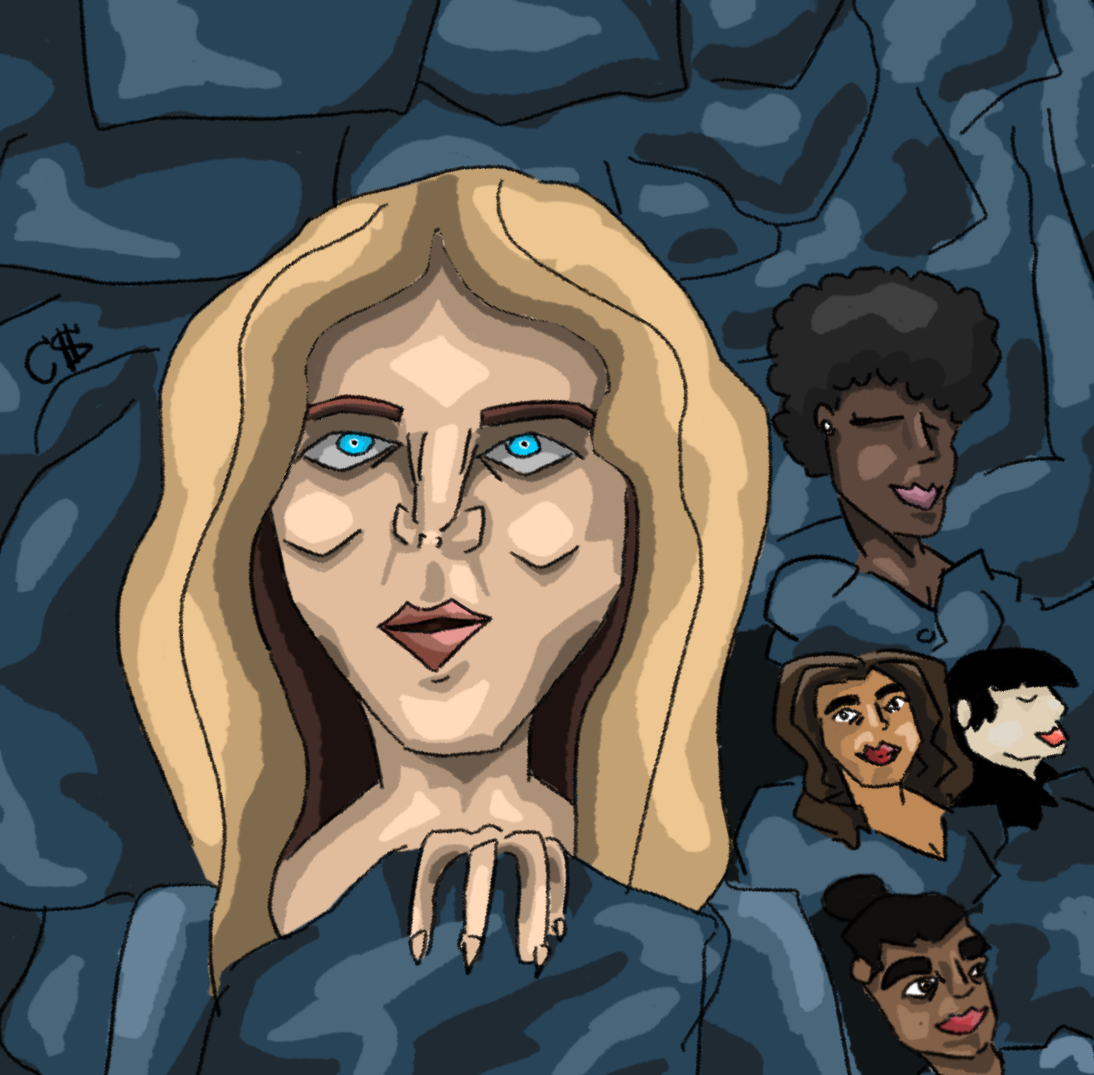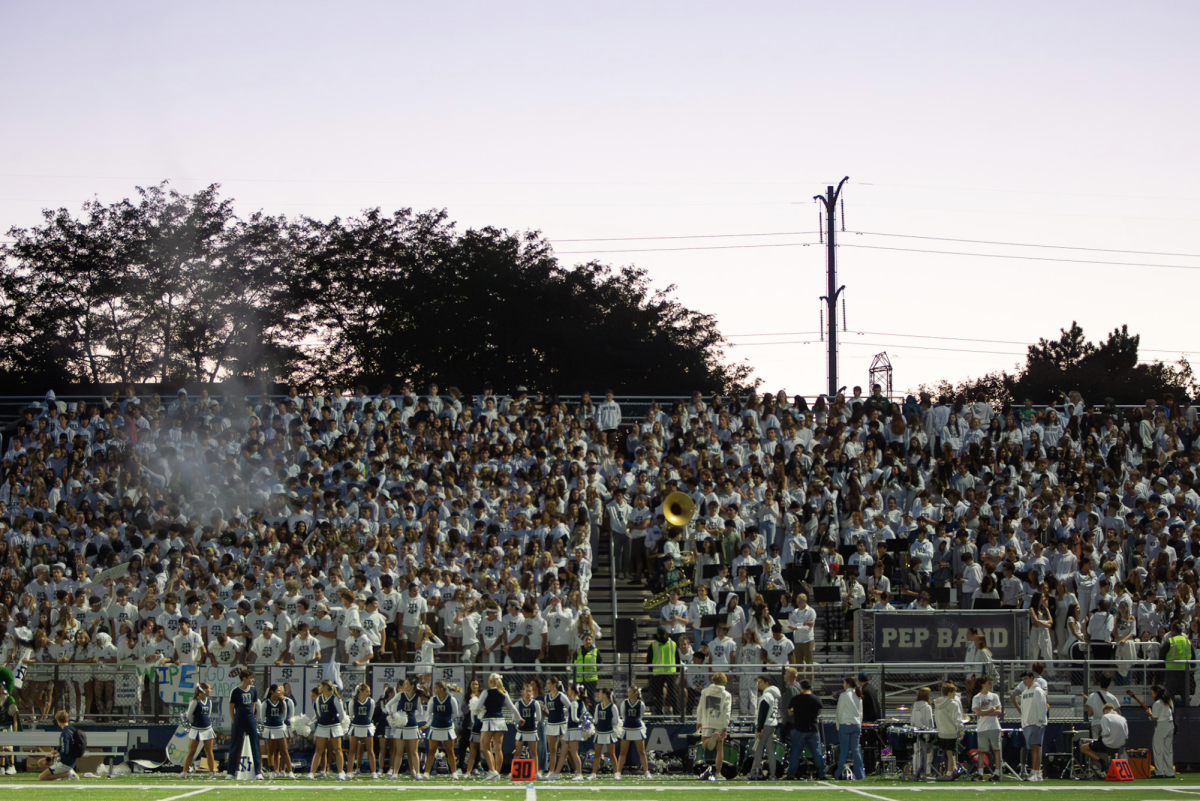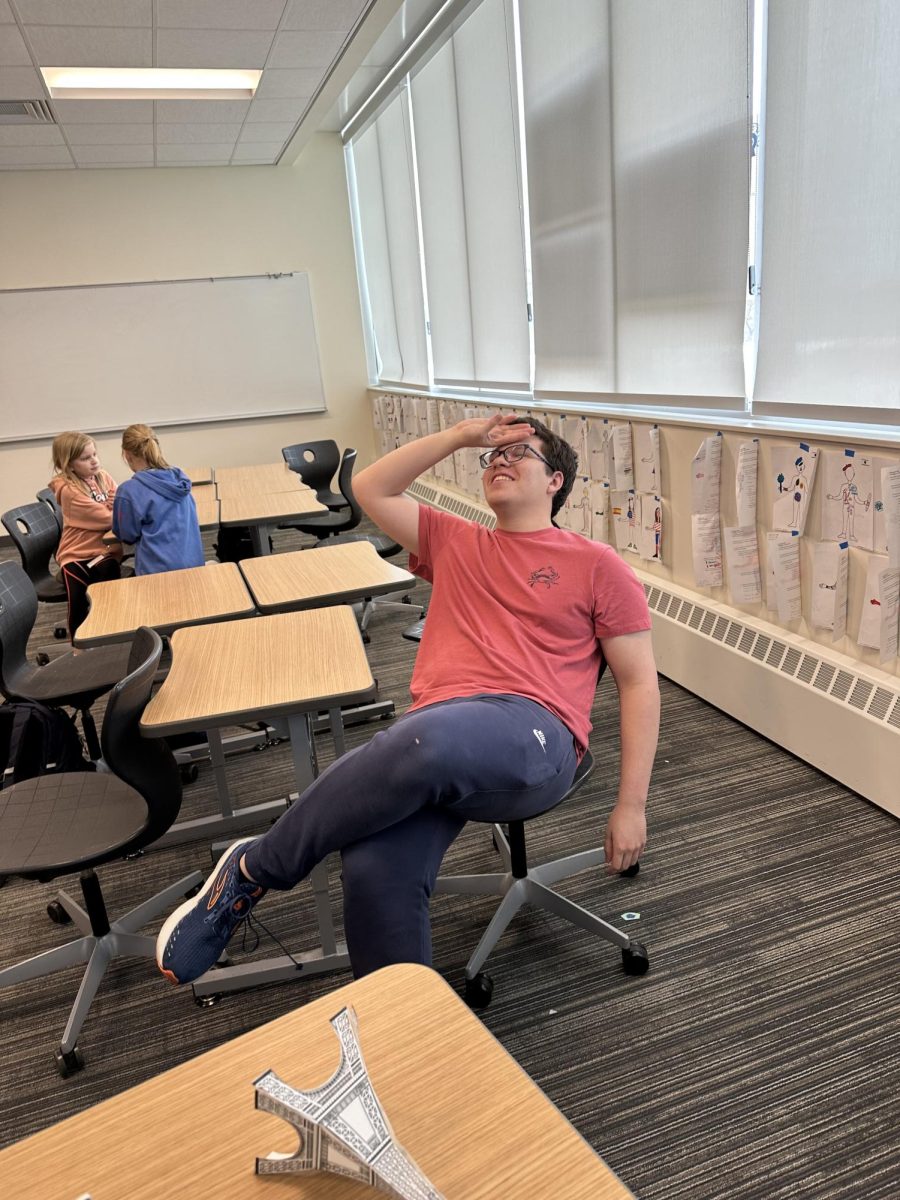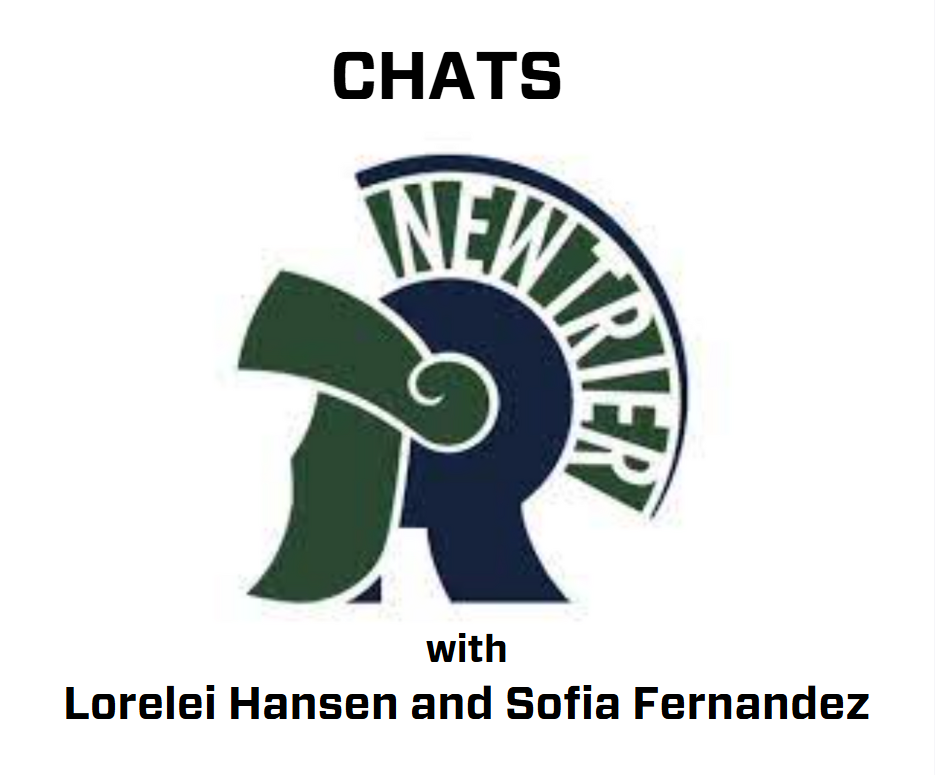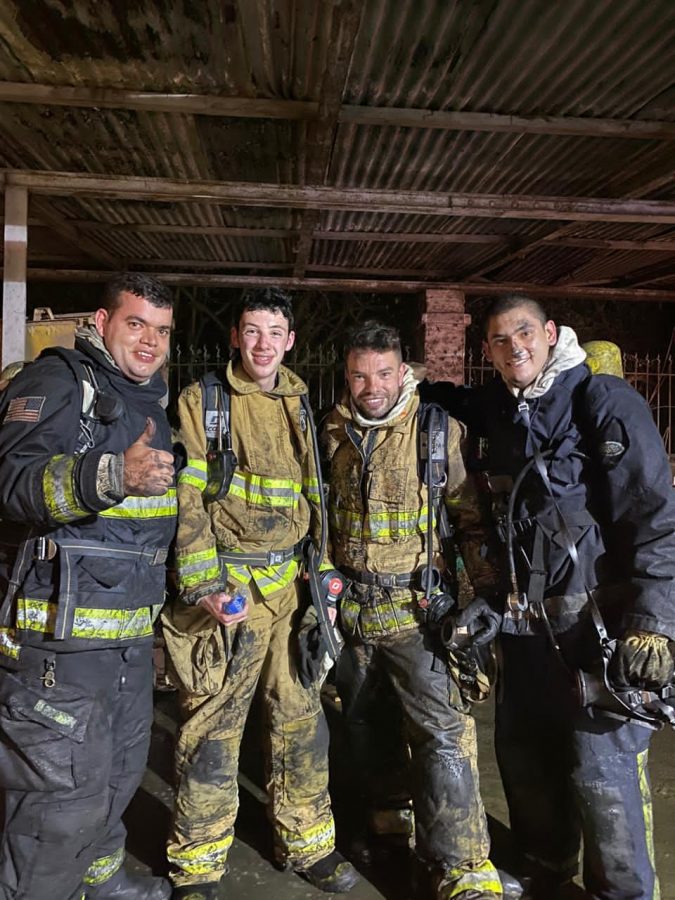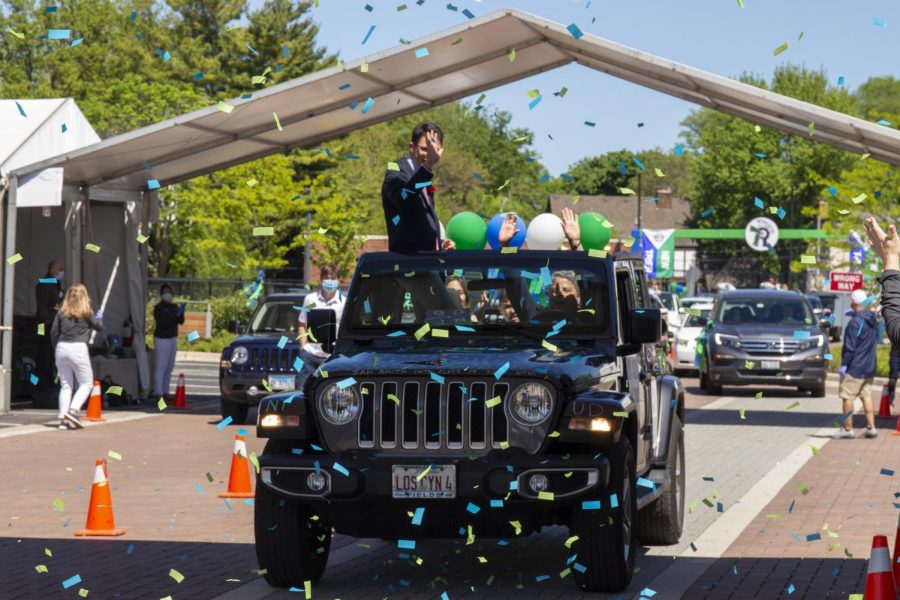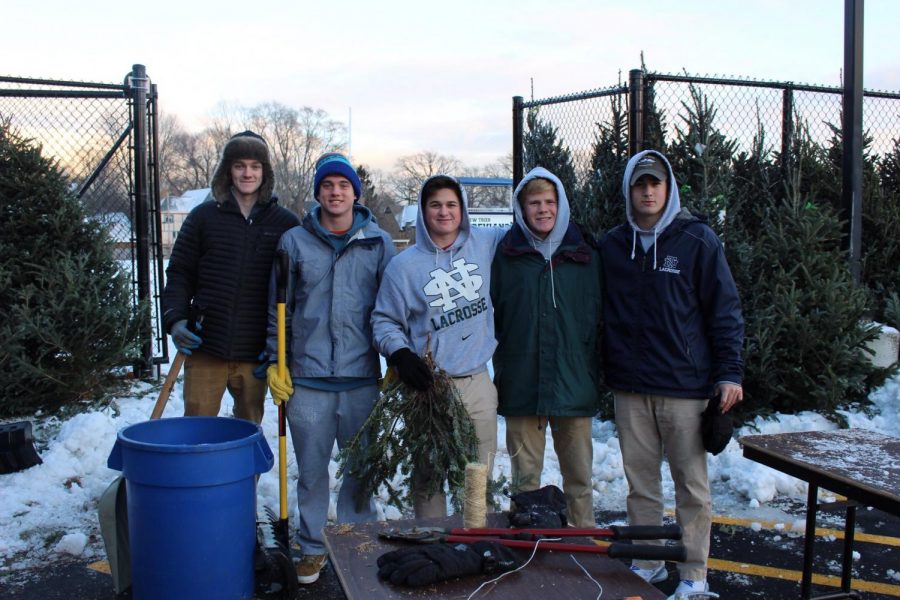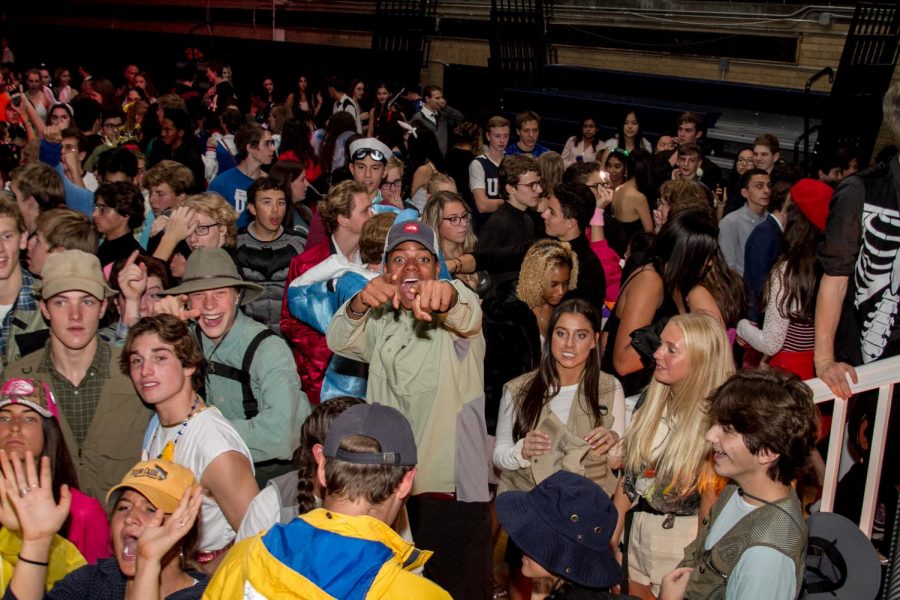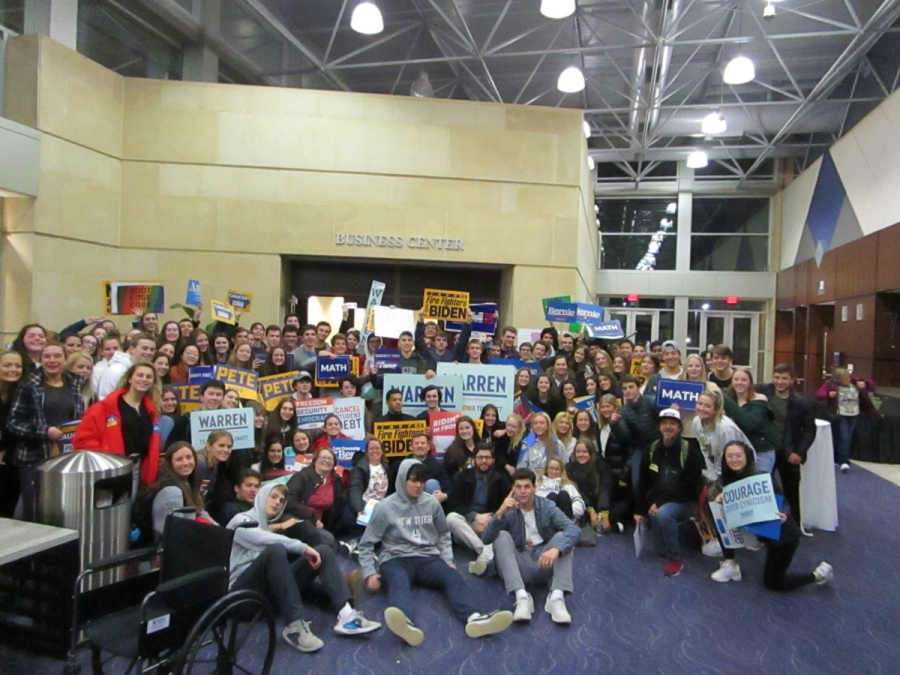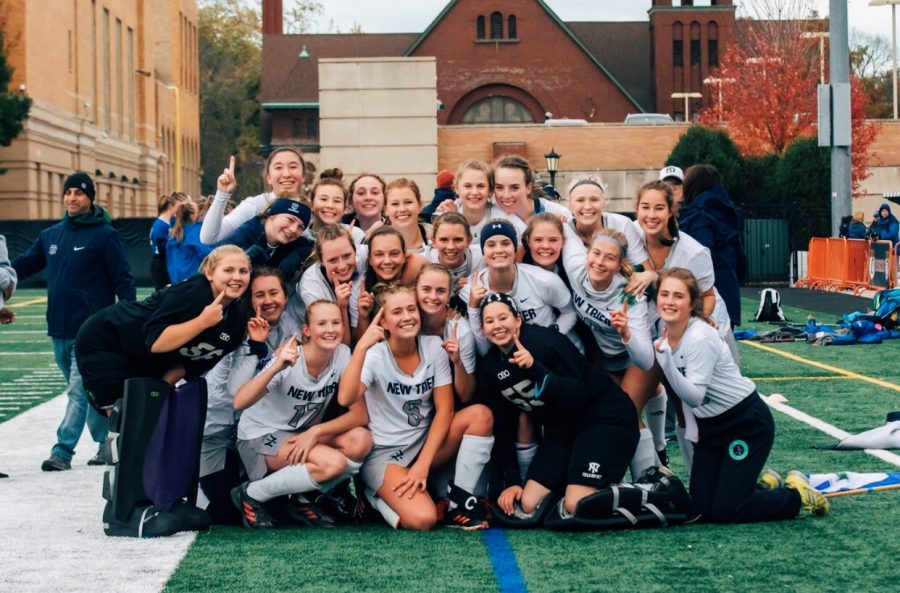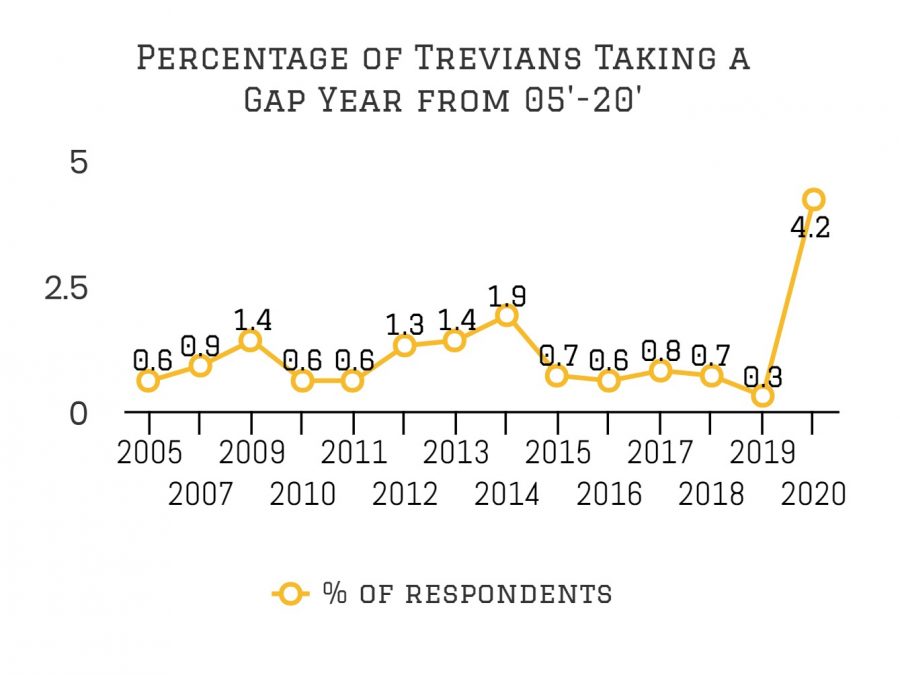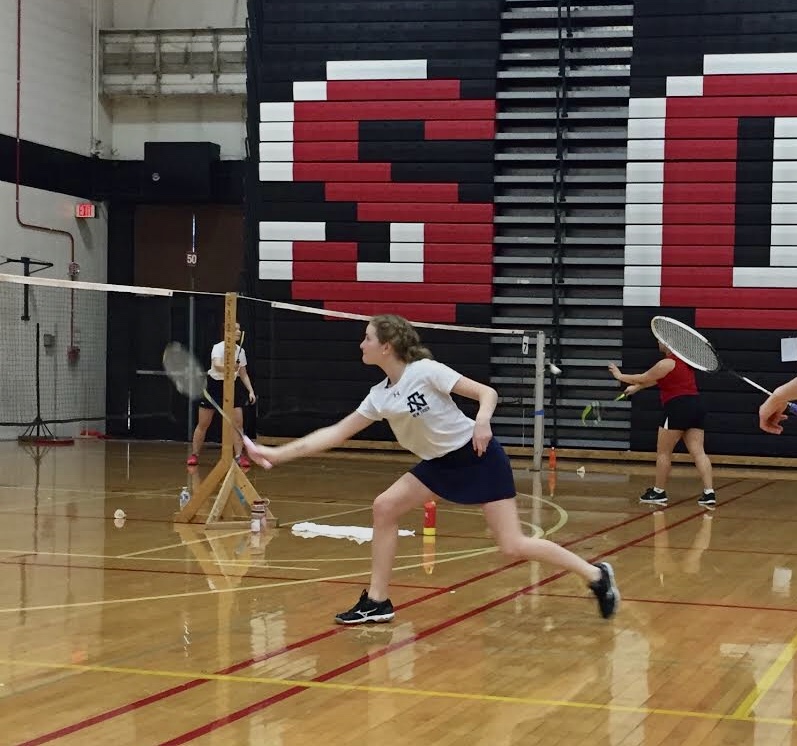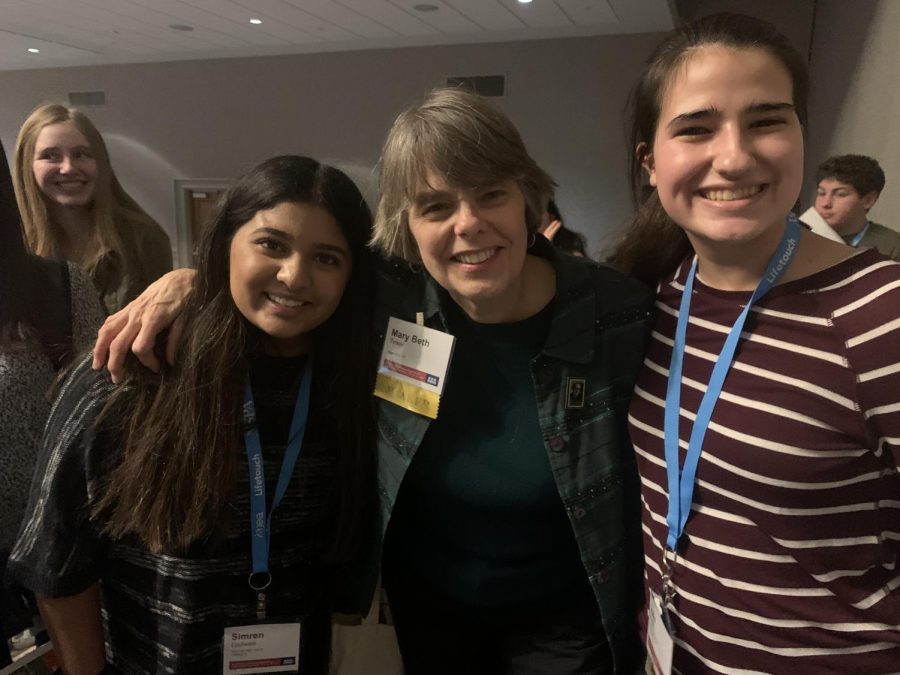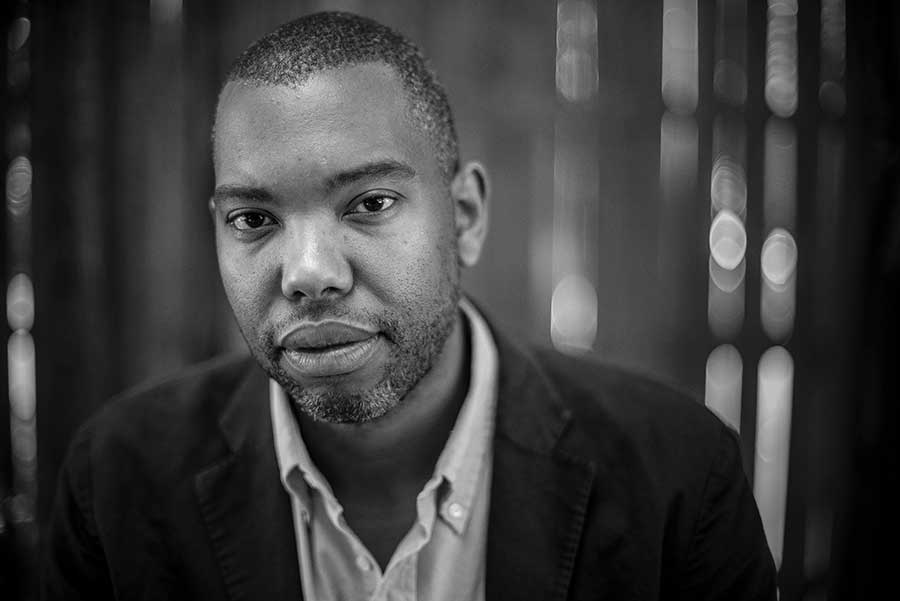Earlier this year, blue-and-white posters were posted on just about every wall in the atrium of New Trier’s Winnetka campus. What did they describe? New Trier’s Model United Nations (NTMUN), a close-knit community of students who meet on the fourth floor every Thursday.
Many students simply ignored the posters. Yet for some, Model UN was intriguing, and for returning students, an invitation to jumpstart another exciting season.
Model UN is an international organization with affiliate high school clubs that span across multiple continents. In it, delegates—the official term for club participants—mimic representatives of the real United Nations. One main function of the UN, which Model UN delegates also do, is when presented with a real-world issue, they come together, present their opinions, and work together to find what they think is the best solution.
Delegates come together to do so at conferences, such as the Saint Ignatius Model UN (SIMUN), which is one of the most prestigious one-day conferences in America. Other large ones in Illinois include Northwestern University Model UN (NUMUN) and Model UN of the University of Chicago (MUNUC), which are longer and often last three to four days. Delegates participate in conferences like these to practice the same skills that the real UN uses too: interpersonal communication, quick-thinking, and public speaking.
Cohead and junior Isabella Conrad loves practicing these skills in Model UN, which lead her to gain a cool-headed poise that she wouldn’t find elsewhere.
“It’s just a really great place for students to build upon their speaking skills and gain confidence,” Conrad says.
This learned self-assurance, as well as the public speaking practice, is imperative for success in NTMUN since participants are typically given little time to prepare their thoughts before being thrust into the spotlight.
“Most times [at conferences], you don’t have a speech written out—if you do, it’s only for your first speech,” Conrad said. “You go up there and you communicate to every single person in the room what you think should happen.”
In many cases, public speaking without any preparation can be extremely nerve wracking, especially for those who have little to no experience; Conrad herself remembers visibly shaking her first time at a conference. For outsiders, all the moving parts of Model UN can begin to pile up overwhelmingly.
First, delegates often spend a significant amount of time researching different topics, such as global health or economics. Then the delegates are assigned to different committees such as the World Health Organization or the economic focused “Second Committee.” Learning of their position (i.e., Canada or Uganda) and the associated topic (i.e., vaccines or debt relief), they then write a position paper that introduces their position’s stance on the topic.
Once the conference starts, delegates speak on-the-fly in an opening statement that establishes their stance on the topic to the rest of the delegates. Afterwards, delegates from different schools work together to write a resolution that details the topic’s solutions and next steps.
Don Storm, a sponsor of the club, understands the trepidation. As a person who did not do Model UN in high school, Storm jumped into the deep end last year, learning quickly what the club was all about. Now, as he starts his second year as a sponsor, he admires what Model UN has to offer.
“The more you know about Model UN, the more you will appreciate it, understand it, and become interested in it and love it,” Storm says.
Cohead and junior Arian Azarpira had a similar experience. When he joined the club his freshman year, he often struggled in the motions. Yet by asking the more experienced delegates questions, he gained knowledge quickly.
Now, Azarpira thinks that Model UN is his niche.
“I didn’t necessarily think Model UN was going to be my thing per se, but it’s turned out to be one of the greatest high school experiences I’ve had,” Azarpira says.
Those who thrive in NTMUN are typically those who take every opportunity to grow. For Conrad, that was having fun with the process. For Azarpira, that was asking questions. For Molly Moore, a cohead and junior, that was allowing herself to learn from mistakes.
This learned wisdom led Moore, along with Azarpira, to win the most prestigious award, “Most Outstanding Delegate,” together at the MUNUC conference last year. The two worked side-by-side in a double delegation—in which two delegates from the same team work the same position—as Romania in a disarmament committee.
“It was my defining moment,” Moore says. “There were literally 200 people around me and I was able to get them all into a circle, get them to listen to me, get them to listen to other people, get them to vote proactively on things that we were doing, and that’s why we were able to win the award.”
This year, NTMUN is looking to have another stellar performance at big conferences like MUNUC, which all gears up to a historic one planned later this season: the National High School Model UN (NHSMUN) in New York. NTMUN will go against other teams across the country and even tour the General Assembly building where the actual UN convenes to discuss current issues.
New Trier has not gone to NHSMUN before, but knowing that last year, student delegates from other high schools had the opportunity to speak with current UN delegates and even got to see former President Joe Biden speak in a special address, many members, especially the experienced delegates, are eager to go.
“I’m very excited about going to New York,” Moore says. “It’s going to be in the United Nations building and next to it, and the people who come are going to be able to actually sit in the building where delegates from all around the world come to America to debate real life topics and make decisions that will affect the rest of the world.”
NHSMUN will also allow delegates to show off the skills that they have worked on all year, such as interpersonal communication.
“You actually have to connect to people on a real level, find things in common, [and] be creative in the sense of how you talk to people,” Azarpira says.
Self-confidence is also practiced at conferences. Moore attributes this to knowing that mistakes are normal and that she is not the only one who makes them.
“You’re in a lot of situations where you have to just give a speech on the fly,” Moore says. “You’re going to inevitably make mistakes and everyone else is going to make them too, so that’s why it’s so freeing to not really care, because you’re not the only one.”
At the end of the day, all this skill building leads to what Model UN is all about: the art of the compromise—a must-need in today’s divisive world.
“Model UN is about consensus building; It’s about bridge building, it’s about finding agreement, it’s about negotiation, it’s about finding solutions,” Storm says. “I can’t think of anything that’s more appropriate for our times: a group activity where you build consensus and get to a point where everybody agrees. That’s a wonderful thing.”

